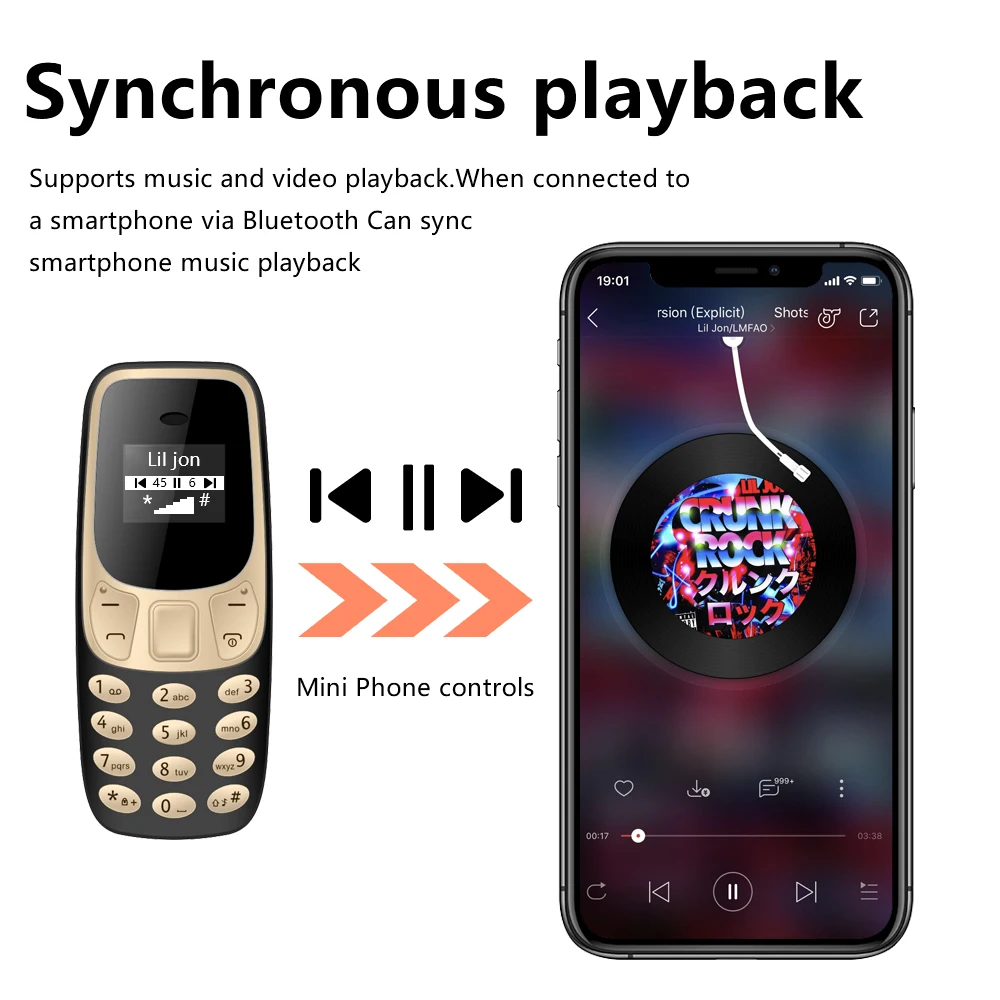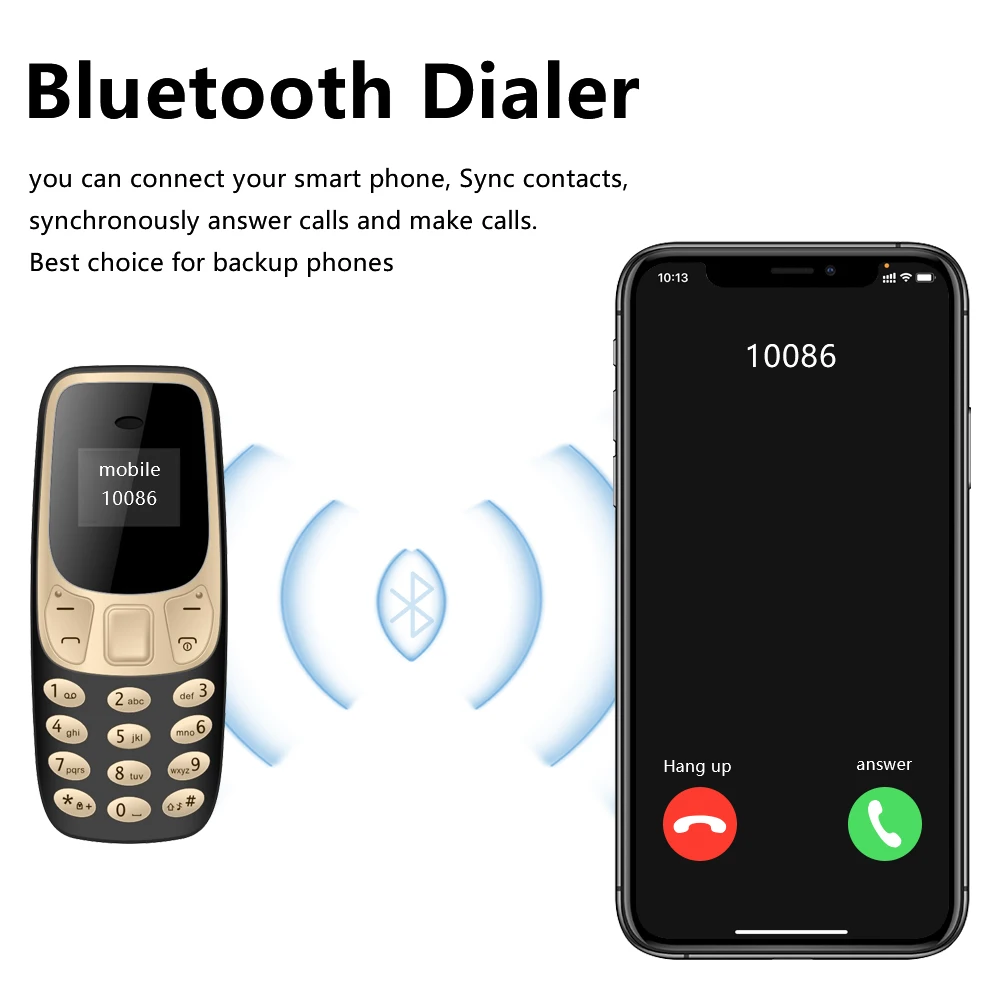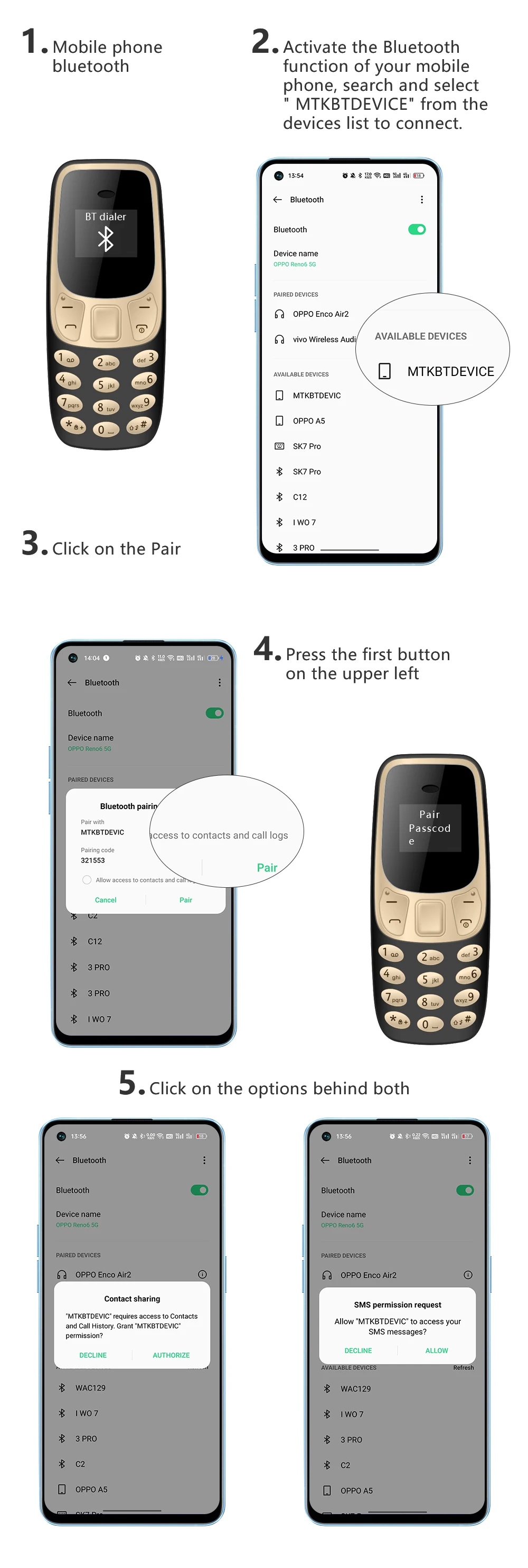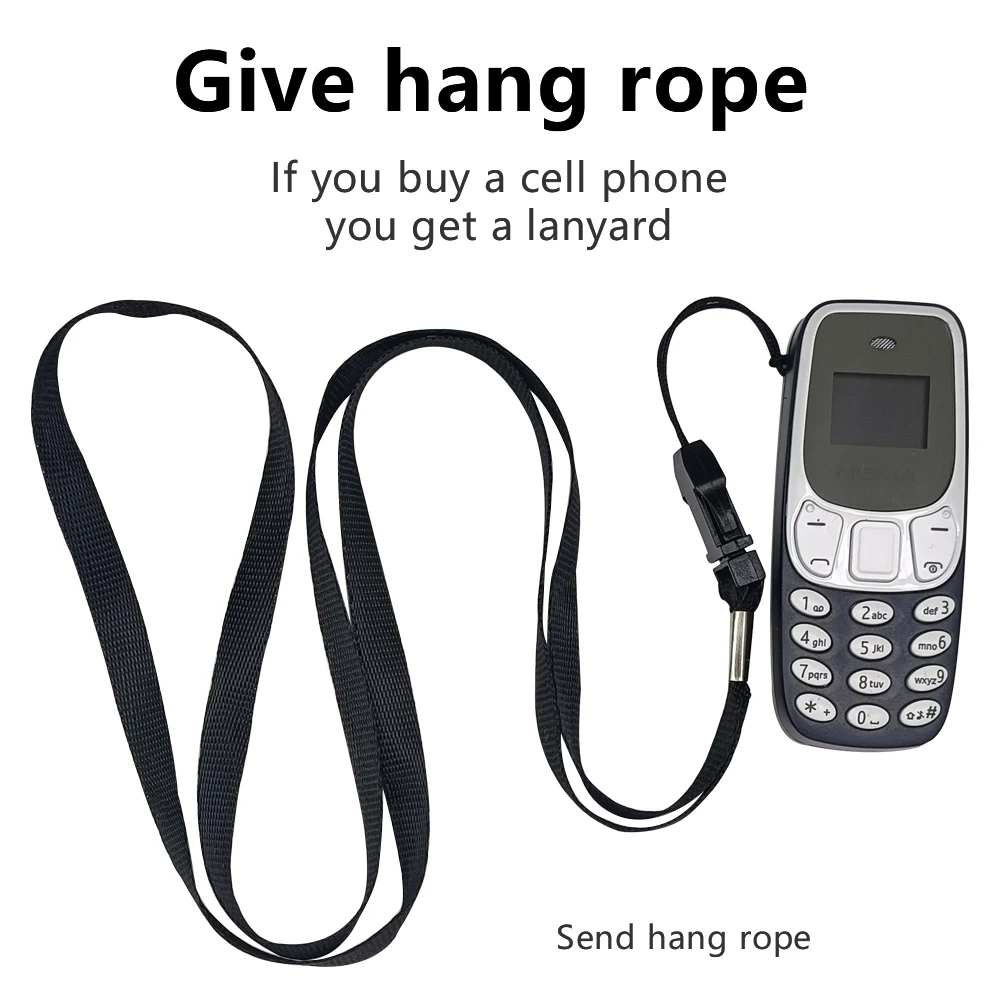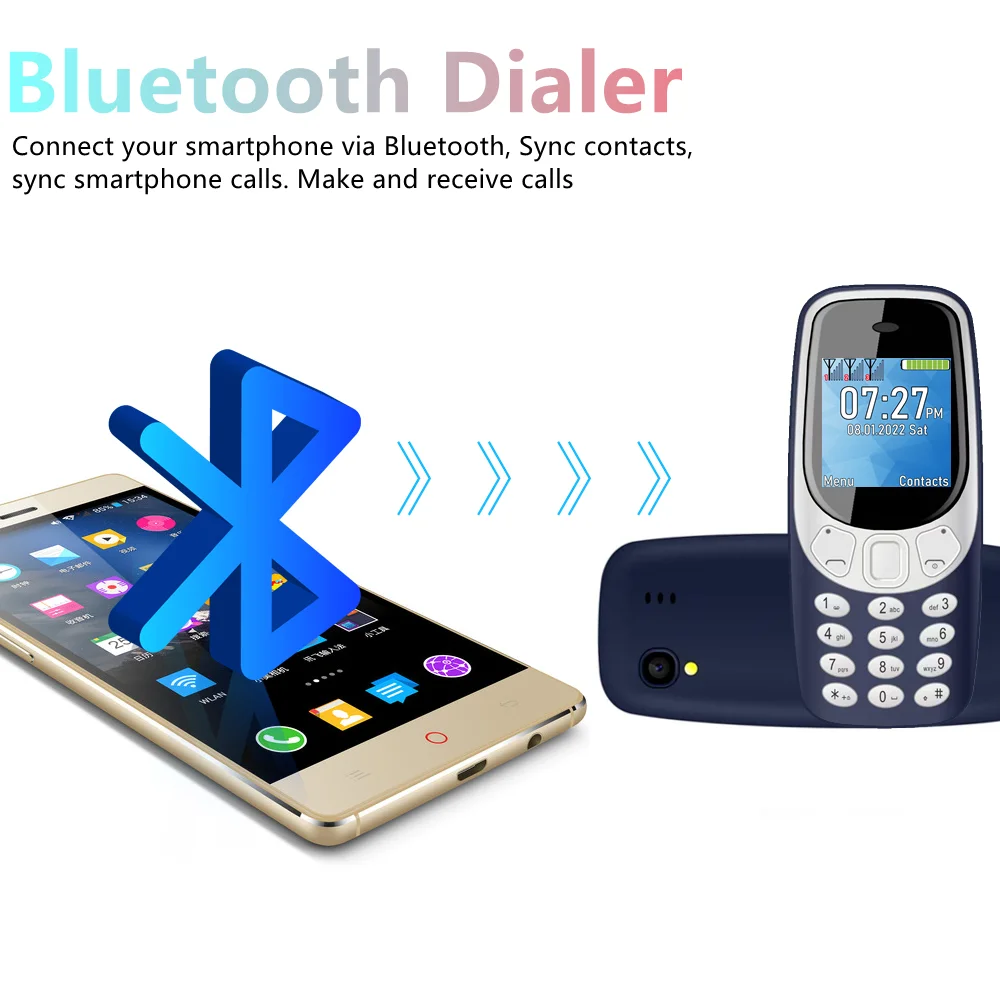SPECIFICATIONS
Brand Name: SERVO
Item Condition: New
Touch Screen: No
Fast Charging: Nonsupport
3.5mm Headphone Port: No
Operation System: Dumbphone OS
Rear Camera Pixel: No Rear Camera
Display Resolution: 240x320
Front Camera Pixel: None Front Camera
Design: BAR
Battery Type: Detachable
Charging Power: Other
Front Camera Quantity: none
Language: English
Language: Russian
Language: German
Language: French
Language: Spanish
Language: POLISH
Language: Portuguese
Language: Italian
Language: Turkish
Language: Arabic
Rear Camera Quantity: none
Display Size: ≤4.0"
Screen Type: Normal Screen
Origin: Mainland United State
Biometrics Technology: No
Battery Capacity(mAh): Other
Charging Interface Type: Micro USB
Wireless Charging: No
SIM Card Quantity: 2 SIM Card
SIM Card Quantity: 3 SIM Cards
Bluetooth Version: YSE
NFC: No
Battery Capacity Range: <3000 mAh
CPU Model: MTK
Memory Card Type: Dedicated slot
Wi-fi: No
Cellular: 2G
Choice: yes
Basic Information
CPU : MTK6261
RAM :32MB
ROM :32MB
External Memory :Maximum support 16GB expansion
Network type :GSM
Frequency :GSM 850/900/1800/1900MHz
Bluetoth :3.0 Version
Screen size: 0.66 inch
SIM Card Slot: Dual SIM,Dual Standby( 2 Nano SIM card )
TF card slot :Yes
Micro USB Slot :Yes
Additional Features :,,Bluetoth,Alarm,
Product size :68x 28 x 12 mm
Package size :152 x 91 x 30 mm
Product weight :0.022kg(including battery)
Language
English, French, Spanish, Danish, Polish, Portuguese, Italian, German, Malay, Indonesian, Dutch, Vietnamese, Turkish, Russian, Bulgarian, Arabic, Persian, Hebrew, Thai, Greek , Sweden, Croatia,
Accessories
1 x battery
1 x USB cable
1 x User manual
1 x Sling(Black ,Free Gift)
1 x Case(Including earplugs, ear hooks)
Product Parameter
Model : Q3308 Pro
CPU : MTK6261
Screen Size : 1.33 inch HD 240*240 Screen
SIM Card Quantity : 3 SIM cards (3 Nano SIM card)
Phone Size : 81.6mmX35.7mmX11.8mm
Network : 2G GSM 850/900/1800/1900MHz
Memory Card : 32Mb RAM,32Mb ROM(Maximum support 32GB expansion ,The system will occupy part of the memory,It is recommended to install a memory card before using the phone)
Battery : 600mAh
Phonebook : 300
Camera : 0.3MP
Weight : 32g
Language
English, Russian, French, Spanish, Polish, Portuguese, Italian, Deutsch, Bahasa Melayu, Bahasa Indonesia, Czech, Hungarian, Vietnamese, Turkish, Arabic, Hebrew, Thai, Greek, Croatian, Persian
Package
1 x Phone
1 x Box
1 x USB Cable
1 x Battery
1 x Case(Free Gift)
1 x Sling(Black ,Free Gift)
BM10 Product function display
Q3308 Product function display
Please read me before ordering
1. Generally, Aliexpress system takes 24 hours to verify payment, then we usually ship within 24 to 48 hours.
2. We will declare a lower price on the invoice / account to help avoid customs fees if the package passes strict customs inspection. You still have to pay taxes to kick the habit. We will not bear the tariffs. Due to the refusal of customs clearance, the cost of returning the goods or the loss of the package will be borne by the customer.
3. If we select DHL, commissions for remote charges, customs fees or customs clearance or warehousing charges charged by DHL are not included.
4. Open the package in the presence of the postman. If the package is damaged or empty (stolen), please ask the post office to provide official documents, especially claim request documents.
5. Before using the mobile phone, open the back cover of the mobile phone, remove the battery and check whether there is a layer of insulating adhesive paper on the battery interface. Please remove it before use.
6. All test results of third party applications (Antutu, CPU-Z, etc.) are for reference only.
7. The product items shown on our website are close to the real colors, but with different lighting and display factors, there are certain colors.
8. If you have any problem, contact us.If you are satisfied with our products and services. Hope you can give us 5 star Reviews. Thank you




























